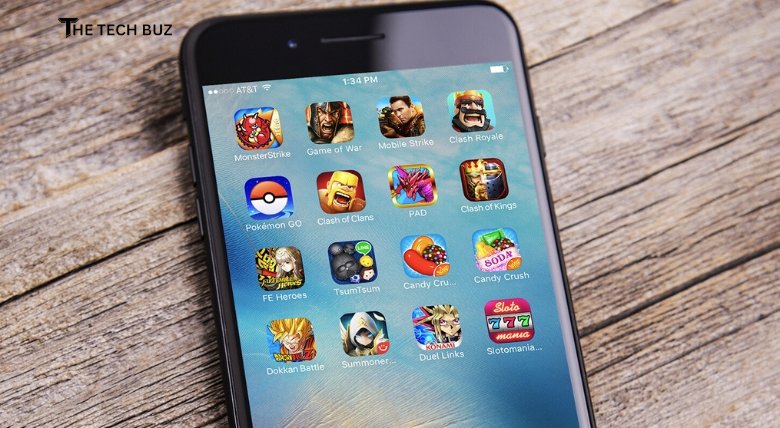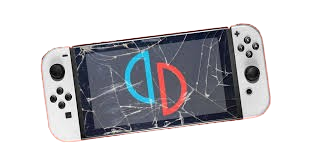Introduction
A mobile game is a video game that is typically played on a mobile phone. Including mobile phones (feature phones or smartphones), tablets, PDAs handheld game consoles, portable media players, or graphing calculators, with and without network availability. The earliest known game on a mobile phone was a Tetris variant on the Hagenuk MT-2000 device from 1994.
History of mobile game
Main article: History of mobile games
Towards the end of the 20th century, mobile phone ownership became ubiquitous in the industrialized world due to the establishment of industry standards, the rapid fall in the cost of handset ownership, and use driven by economies of scale. As a result of this explosion, technological advancement by handset manufacturers became rapid.
In 1999, NTT Docomo launched the i-mode mobile platform in Japan, allowing mobile games to be downloaded onto smartphones. Several Japanese video game developers announced games for the i-mode platform that year, such as Konami announcing its dating simulation Tokimeki Memorial. The same year, Nintendo and Bandai were developing mobile phone adapters for their handheld game consoles, the Game Boy Color and WonderSwan, respectively.
Other major mobile game trends include hyper-casual games such as Flappy Bird and Crossy Road and location-based games like Pokémon Go.

Calculator games
Clone of Tetris being played on a modified TI-83 PlusIt is a fan-made game similar to the game Portal
Calculator gaming is a form of gaming in which games are played on programmable calculators, especially graphing calculators.
Calculators such as HP-48 and TI-82 could be programmed in proprietary programming languages such as RPL programming language or TI-BASIC directly on the calculator; programs could also be written in assembly language or (less often) C on a desktop computer and transferred to the calculator. As calculators became more powerful and memory sizes increased, games increased complexity.
In 1980, Casio’s MG-880 pocket calculator had a built-in “Invaders” game (essentially a downscaled Space Invaders clone), released in the Summer of that year. Another early example is the type-in program Darth Vader’s Force Battle for the TI-59, published in BYTE in October 1980. The magazine also published a version of Hunt the Wumpus for the HP-41C.
Industry structure
Total global revenue from mobile game was estimated at $2.6 billion in 2005 by Informa Telecoms and Media. Total revenue in 2008 was $5.8 billion.
Mobile gaming revenue reached $50.4 billion in 2017, occupying 43% of the entire global gaming market and poised for further growth. It is expected to surpass the combined revenues from both PC gaming and console gaming in 2018.
Monetization
See also: Video game monetization
With the introduction of the iOS App Store and support for in-app purchases by October 2009, the methods through which mobile games earn revenue have diverged significantly away from traditional game models on consoles or computers. Since 2009, several models have been developed, and a mobile game developer/publisher may use one or a combination of these models to make revenue.
Premium
The premium model is akin to the traditional model where the user pays for the full game upfront. Additional downloadable content may be available which can be purchased separately. Initial games released to the App Store before in-app purchases were available used this approach, and are still common for many types of games.
Free-to-play
A free-to-play game requires no cost at all to play and generally is designed to be playable from start to finish without having to spend any money on the game. However, the game will include gameplay mechanics which may slow progress toward completing the game. Commonly in mobile games, this is some form of energy or stamina that limits how many turns or actions a player can take each day.
A mobile game displaying a full-screen interstitial ad for a different game
Advertising-supported
An ad-supported game will be free to download and play, but periodically or persistently, the game will show an advertisement to the user which they will have to watch through before they can continue with the game. The developer earns revenue from the advertising network. In some cases, an in-app purchase allows the player to fully disable ads in these games.
Subscription model
A subscription-based game will offer a base version with limited features that can be played for free, but additional premium features can be obtained if the user pays a monthly subscription fee. If they terminate their subscription, they lose access to those features, though typically not any game progression related to those features, and can pick up those features later by restarting their subscription.
Common limits of mobile games
Mobile games tend to be small in scope (about mainstream PC and console games). Storage and memory limitations (sometimes dictated at the platform level)
place constraints on file size that presently rule out the direct migration of many modern PC and console games to mobile.

Location-based mobile games
Games played on a mobile device using localization technology like GPS are called location-based games or location-based mobile games. These are not only played on mobile hardware but also integrate the player’s position into the game concept.
A well-known example is the outdoor recreational activity of geocaching, which can be played on any mobile device with an integrated or external GPS receiver. External GPS receivers are usually connected via Bluetooth.
Augmented reality games
Main article: Augmented reality
Mobile devices have been used as a platform for Augmented reality (AR in short) games, using the device’s camera(s) as an input for the game. While playing the game, the player aims the device’s camera at a location, and through the device’s the player travels to locations marked on their GPS map and then can enable the augmented reality mode to find Pokémon creatures to capture.
Multipurpose games
Since mobile devices have become present in the majority of households (at least in developed countries). There are more and more games created for educational, lifestyle, and, health improvement purposes. For example, “Speech-language pathology and children’s rehabilitation in hospitals can be aided by mobile games developed by the Finnish startup Rehaboo!.”. Acquiring new useful or healthy habits (Habitica), memorizing things, and learning languages (Memrise).
There are also apps with similar purposes that are not games per se, in this case, they are called gamified apps. Sometimes it is difficult to draw a line between multipurpose games and gamified apps.
Multiplayer mobile games
Many mobile games support multiple players, either remotely over a network or locally via Wi-Fi, Bluetooth, or similar technology.
There are several options for playing multiplayer games on mobile phones: live synchronous tournaments and turn-based asynchronous tournaments.

Distribution
Developers can distribute mobile games in one of four ways.
- A wireless carrier network delivers a game binary file to the mobile device over the air (OTA).
- The original equipment manufacturer (OEM) preloads a game binary file onto the device.
- After the launch of the Apple App Store, mobile OS platforms like Apple iOS, Google Android, and Microsoft Windows Phone. The mobile OS developers have launched digital download storefronts that can be run on devices using the OS or from software used on PCs.
- These storefronts (like Apple’s iOS App Store) act as centralized digital download services.
See also
Digital zombie – A person over-engaged with digital technology
- iPod game
- Handheld electronic game
- Handheld game console
- Handheld video game
List of most-played mobile games by player count
- Mobile app
- Mobile gambling
- Mobile development
- N-Gage (device)
- Scalable Network Application Package
- Transreality gaming
References
Dal, Yong Jin (27 July 2016). Mobile Gaming in Asia: Politics, Culture and Emerging Technologies. Springer. pp. 6–7. ISBN 9789402408263. Retrieved 13 February 2021.
16 November 2014. Archived from the original on 22 May 2019. Retrieved 16 September 2018.
Blog, Microsoft Devices (2013-01-16). “10 things you didn’t know about mobile gaming”. Microsoft Devices Blog. Retrieved 2021-08-20.
Behrmann M, Noyons M, Johnstone B, MacQueen D, Robertson E, Palm T, Point J (2012). “State of the Art of the European Mobile Games Industry” (PDF). Mobile GameArch Project. Archived from the original (PDF) on 2017-05-05. Retrieved 2013-08-12.
Wright, Chris (March 14, 2016). “A Brief History of Mobile Games: In the beginning, there was Snake”. PocketGamer. Retrieved August 18, 2020.

Chan, Stephanie (July 13, 2017). “Mobile game revenue finally surpasses PC and consoles”. Venture Beat. Retrieved January 8, 2018.
Yang, George (June 24, 2021). “‘The Little Handheld That Could’: Examining The Vita’s Impact A Decade Later”. The Verge. Retrieved June 24, 2021.
Gaudiosi, John (October 16, 2014). “How Android TV is a (video) game changer”. Fortune. Retrieved June 21, 2021.
“Technology: The games that aliens play”. New Scientist. Vol. 88, no. 1232–1233. Reed Business Information. 18 December 1980. p. 782. ISSN 0262-4079.[permanent dead link]
Porter, Matt (11 May 2019). “Episode 131 – Retro Gadgets – Part One – Casio MG-880 Music and Game Calculator”. The Gadget Man: Technology News and Reviews. Retrieved 2 December 2021.
Jackson, Clete (October 1980). “Darth Vader’s Force Battle”. BYTE. pp. 50–54. Retrieved 14 June 2014.
Librach, Hank (February 1981). “Hunt the Wumpus with Your HP-41C”. BYTE. pp. 230, 232. Retrieved 18 October 2013.
Retrieved 2013-11-06.







1 comment
Comments are closed.